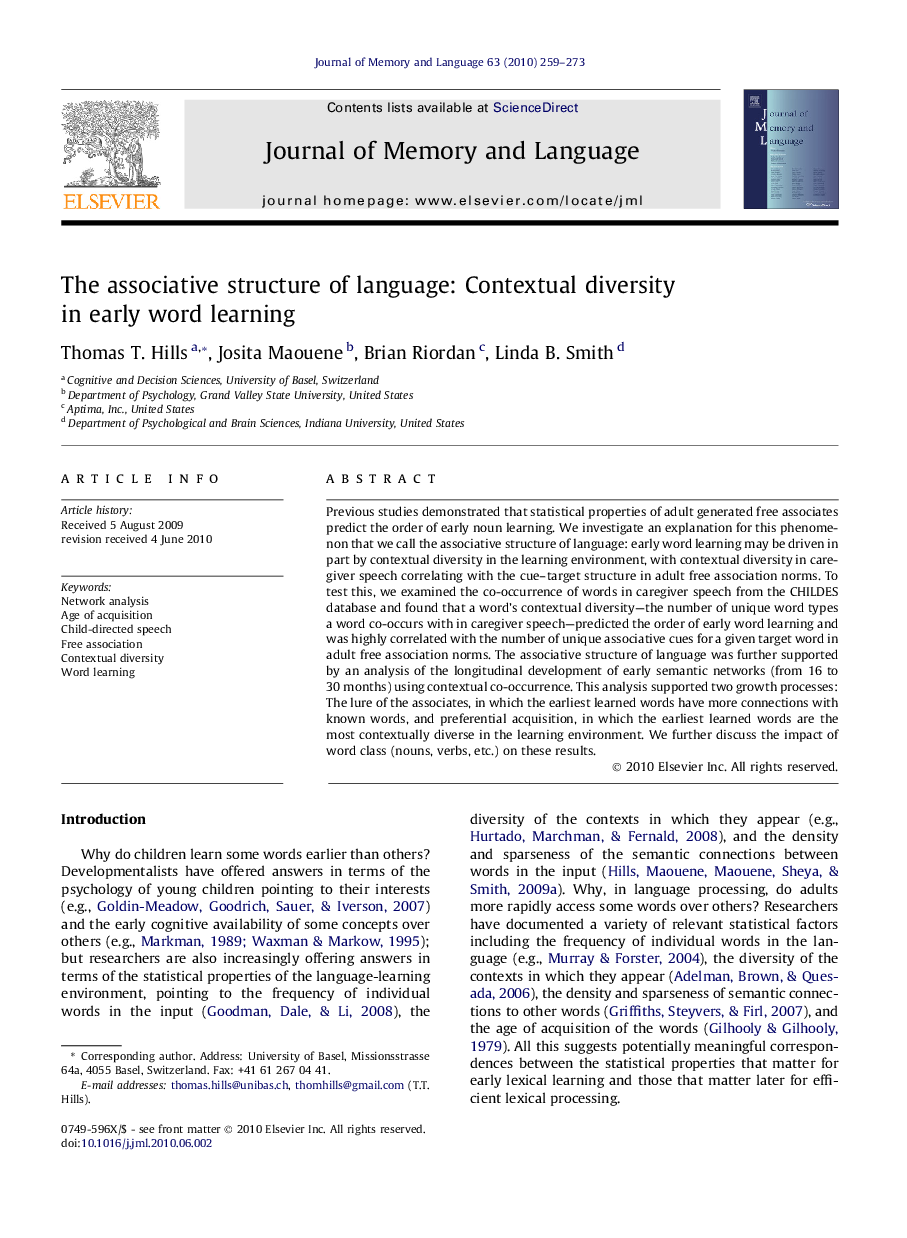| Article ID | Journal | Published Year | Pages | File Type |
|---|---|---|---|---|
| 931955 | Journal of Memory and Language | 2010 | 15 Pages |
Previous studies demonstrated that statistical properties of adult generated free associates predict the order of early noun learning. We investigate an explanation for this phenomenon that we call the associative structure of language: early word learning may be driven in part by contextual diversity in the learning environment, with contextual diversity in caregiver speech correlating with the cue–target structure in adult free association norms. To test this, we examined the co-occurrence of words in caregiver speech from the CHILDES database and found that a word’s contextual diversity—the number of unique word types a word co-occurs with in caregiver speech—predicted the order of early word learning and was highly correlated with the number of unique associative cues for a given target word in adult free association norms. The associative structure of language was further supported by an analysis of the longitudinal development of early semantic networks (from 16 to 30 months) using contextual co-occurrence. This analysis supported two growth processes: The lure of the associates, in which the earliest learned words have more connections with known words, and preferential acquisition, in which the earliest learned words are the most contextually diverse in the learning environment. We further discuss the impact of word class (nouns, verbs, etc.) on these results.
